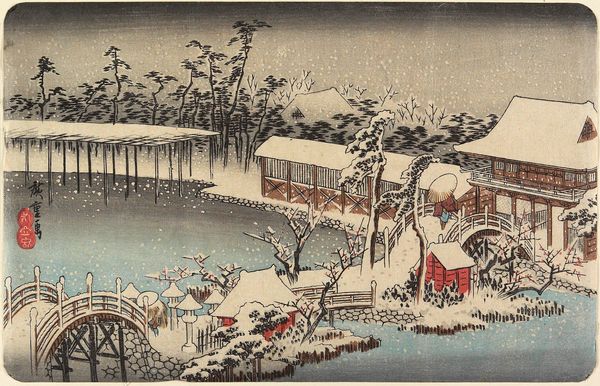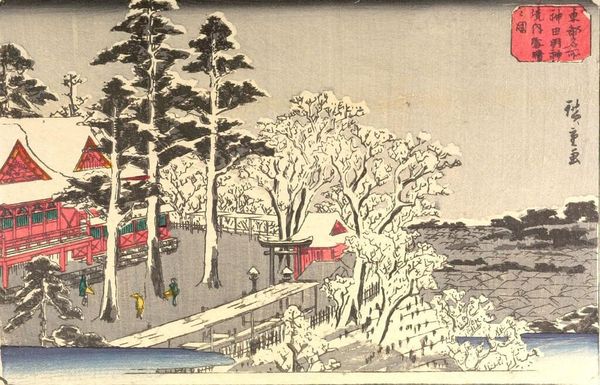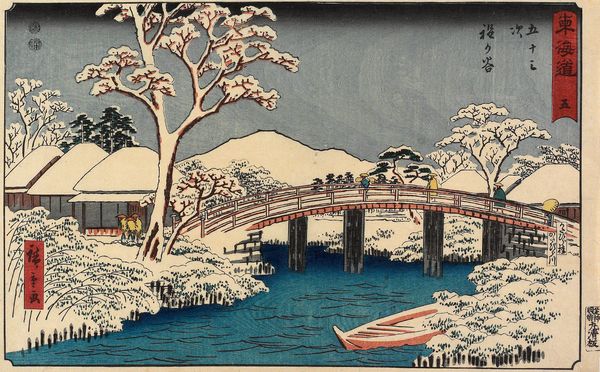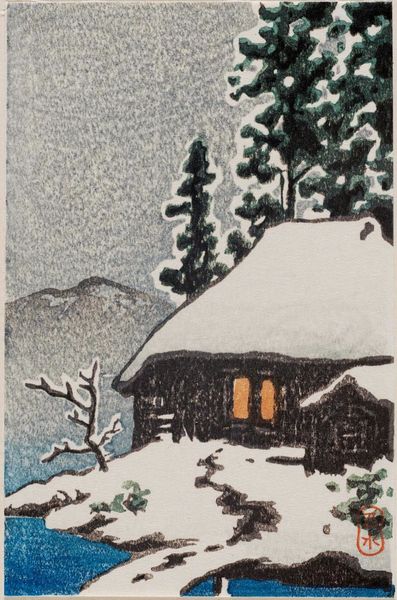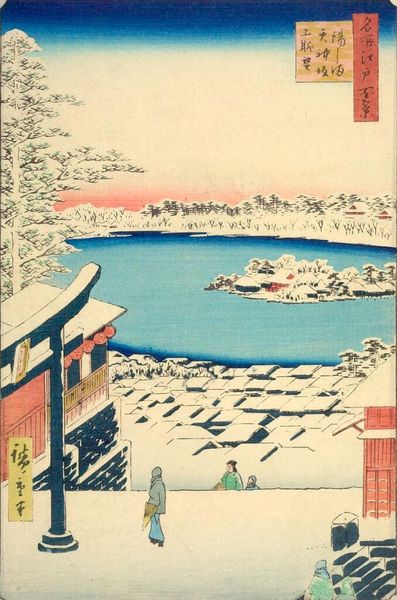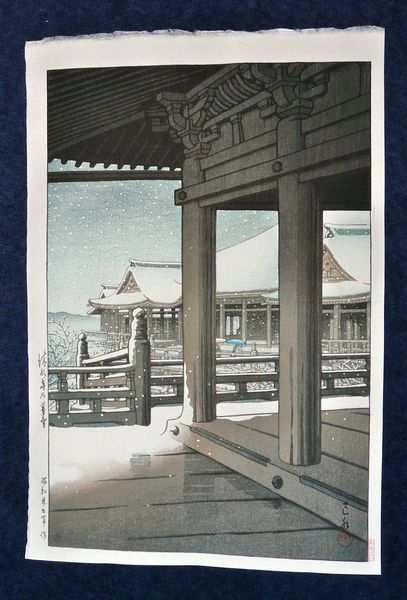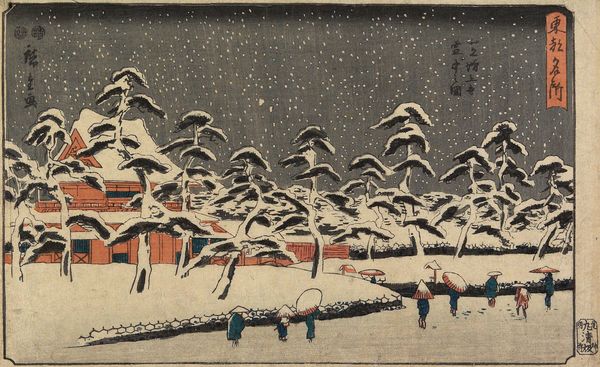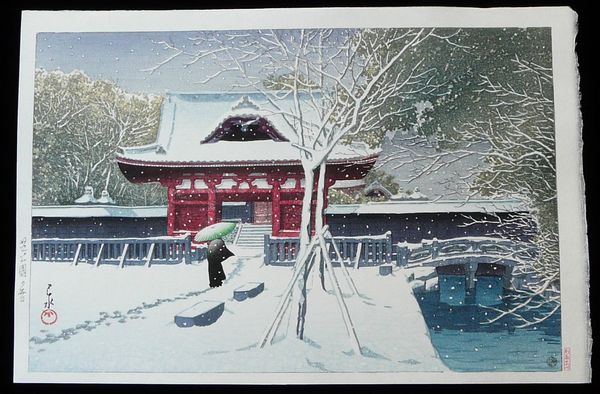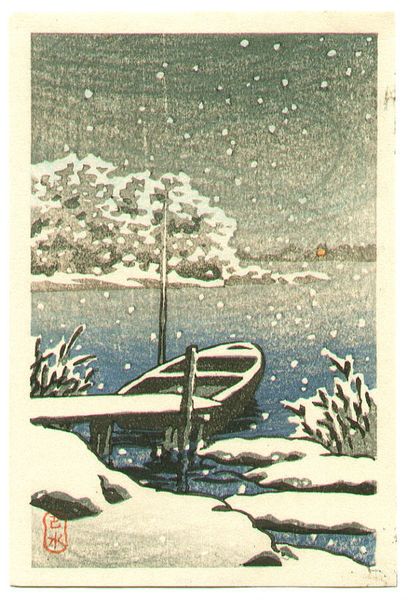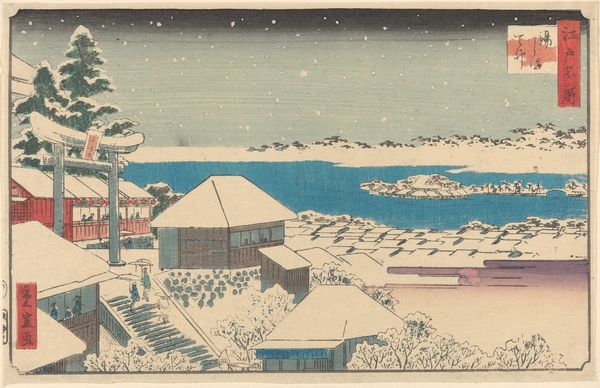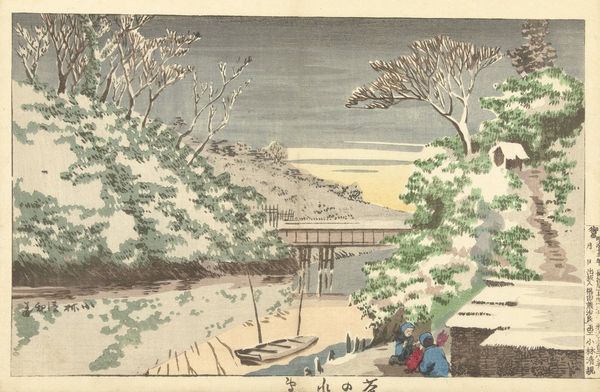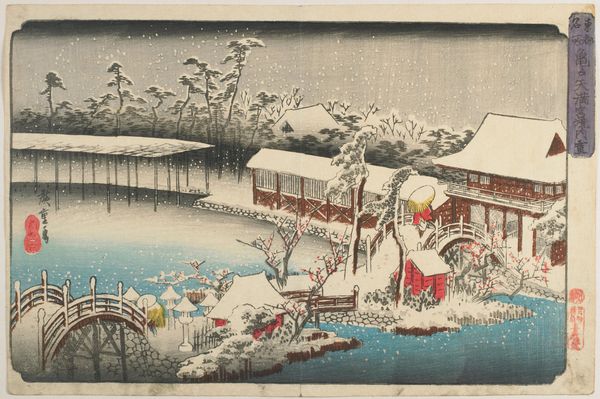
Copyright: Public domain Japan
Editor: This is "Snow at Ishinomaki" by Hasui Kawase, a woodblock print from 1953. The scene is so quiet, so still. The snow is really the focal point of the work. What stands out to you? Curator: The snow isn't just snow; it's a visual echo of purity, a symbolic blanketing of the familiar, prompting reflection. Ukiyo-e prints, like this, often use weather as a narrative device. What feelings do these symbols evoke? Editor: Hmm. Well, looking at the boats especially, there's a sense of longing, like a pause in daily life, maybe anticipation for spring? Is that a common theme in Ukiyo-e prints? Curator: Precisely! Water is transition; boats are journeys – combined with the snow, it can signify waiting for a shift in fortune or a period of introspection. The artist is also part of a larger cultural memory, referencing traditional Japanese aesthetics and themes in his landscapes. Notice the composition, the deliberate arrangement... Editor: You're right, it leads your eye back, further and further into the distance, with that snow-covered mountain in the back. Does that speak to the viewer in any specific way? Curator: Definitely. This spatial depth invites contemplation, doesn’t it? It asks us to consider not only the physical landscape, but also our own inner landscape, how we place ourselves within the world around us. Editor: I see, it's more than just a pretty picture. The symbols are all connected! This has opened my eyes to details and messages I hadn't noticed before! Curator: Indeed! The quietude allows the visual elements to really resonate and reveals the beauty of even simple objects like snow or water, boats, or architecture.
Comments
No comments
Be the first to comment and join the conversation on the ultimate creative platform.

